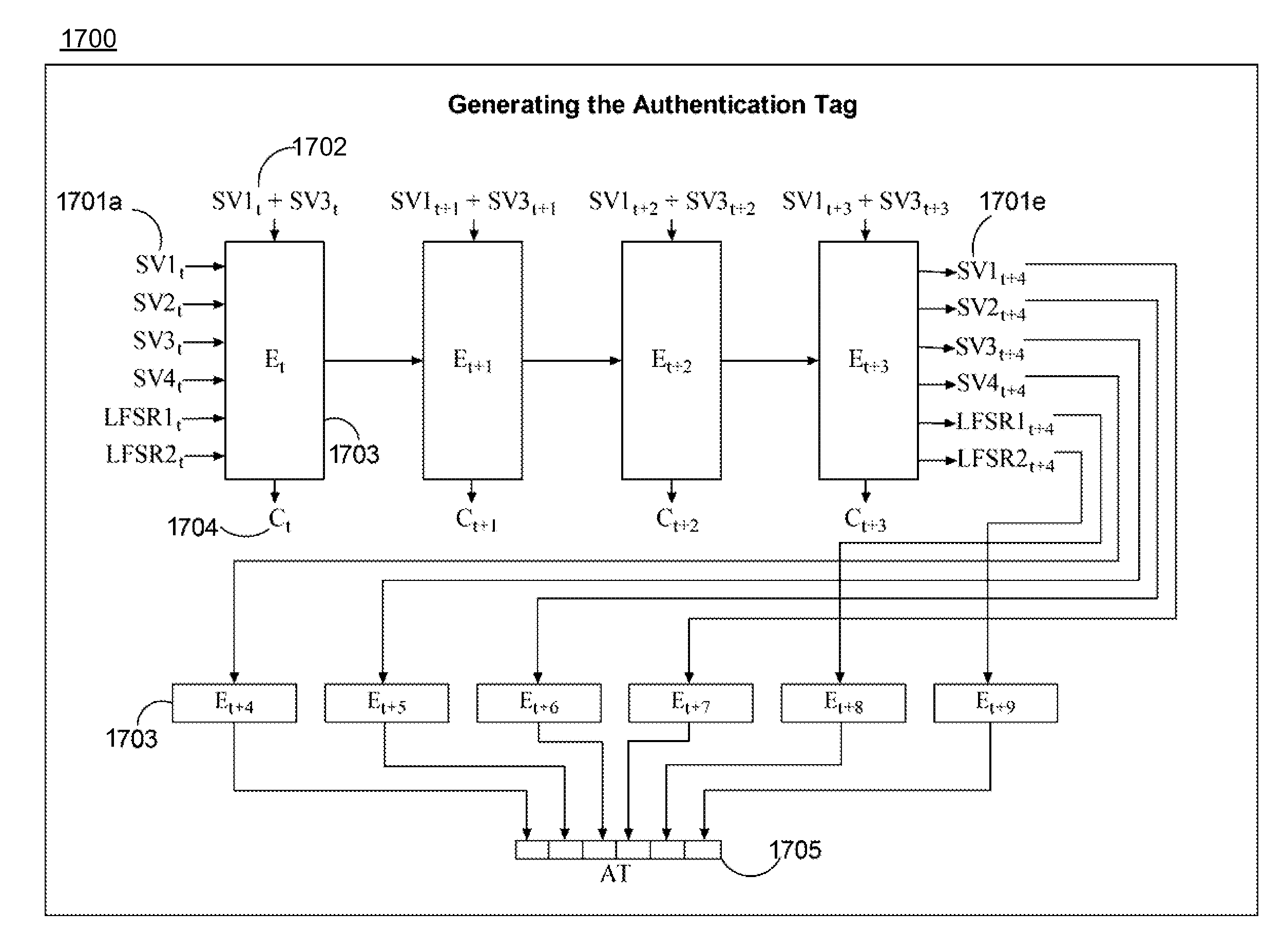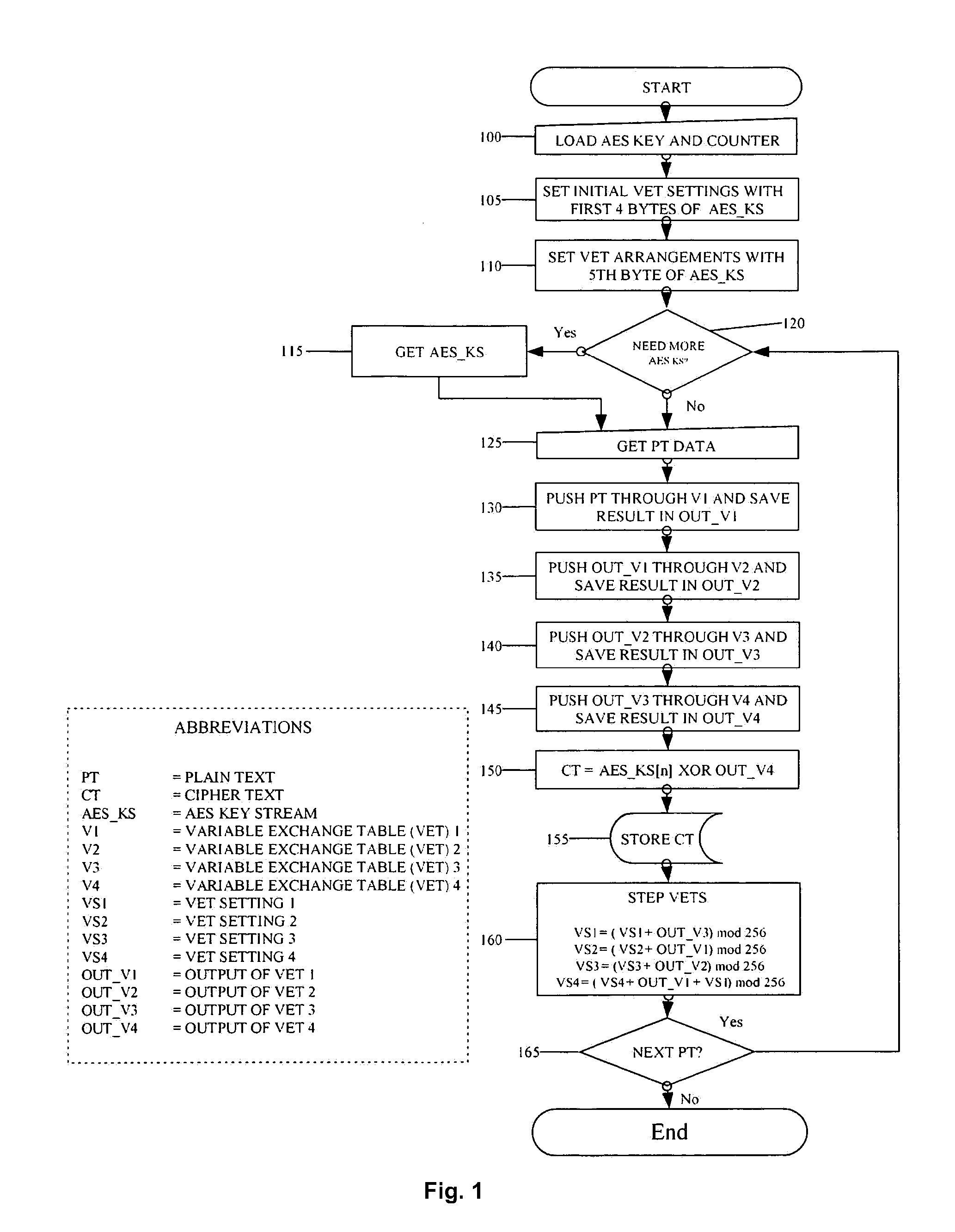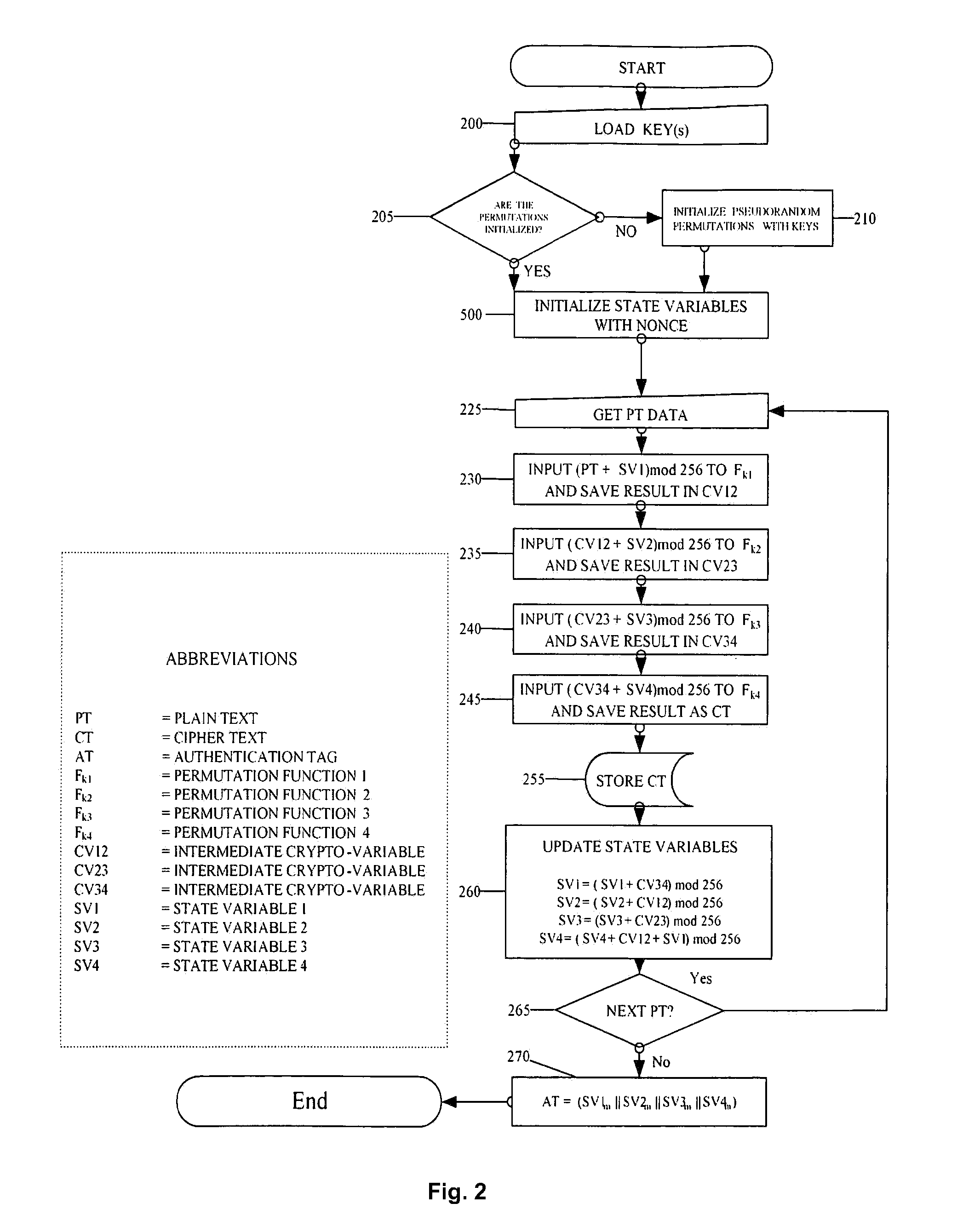System for encrypting and decrypting a plaintext message with authentication
- Summary
- Abstract
- Description
- Claims
- Application Information
AI Technical Summary
Benefits of technology
Problems solved by technology
Method used
Image
Examples
Embodiment Construction
[0031]For a more complete understanding of the described embodiments and for further features and advantages, reference is now made to the following description, taken in conjunction with the accompanying drawings, in which:
[0032]FIG. 1 is a first flowchart in accordance with an embodiment;
[0033]FIG. 2 is a second flowchart in accordance with an embodiment;
[0034]FIG. 3 illustrates an embodiment of an encryption system;
[0035]FIG. 4 illustrates an embodiment of a decryption;
[0036]FIG. 5 illustrates an embodiment for initializing variables using a nonce;
[0037]FIG. 6 illustrates an embodiment for generating an authentication tag from final state variables;
[0038]FIG. 7 illustrates an embodiment for generating a masked authentication tag from a combination of the initial and final state variables;
[0039]FIG. 8 illustrates an embodiment for decrypting and verifying the integrity of the message using a received authentication tag;
[0040]FIG. 9 illustrates an embodiment of the encryption metho...
PUM
 Login to View More
Login to View More Abstract
Description
Claims
Application Information
 Login to View More
Login to View More - R&D
- Intellectual Property
- Life Sciences
- Materials
- Tech Scout
- Unparalleled Data Quality
- Higher Quality Content
- 60% Fewer Hallucinations
Browse by: Latest US Patents, China's latest patents, Technical Efficacy Thesaurus, Application Domain, Technology Topic, Popular Technical Reports.
© 2025 PatSnap. All rights reserved.Legal|Privacy policy|Modern Slavery Act Transparency Statement|Sitemap|About US| Contact US: help@patsnap.com



